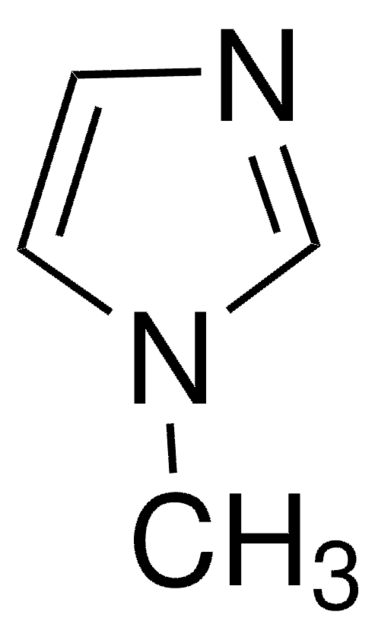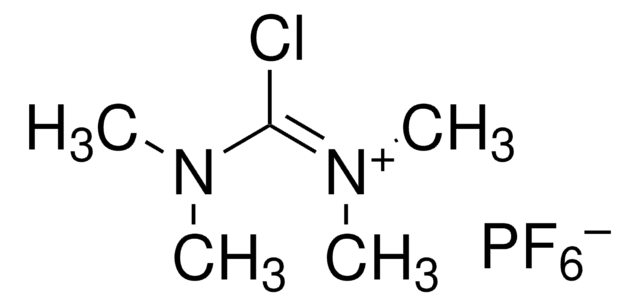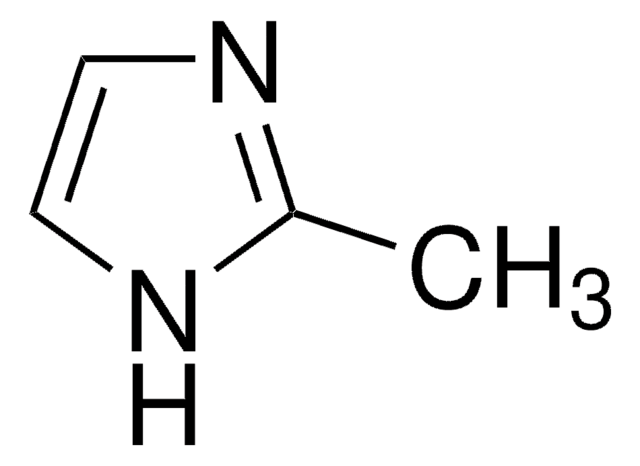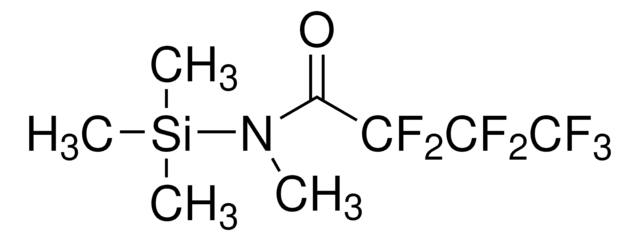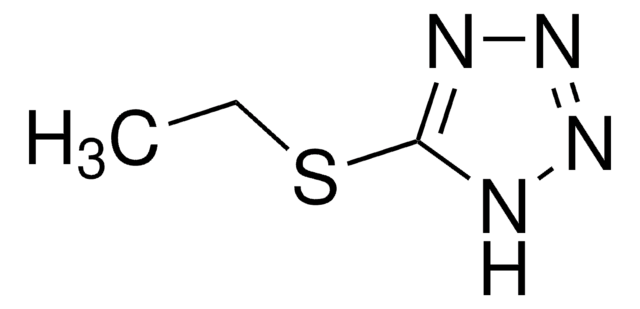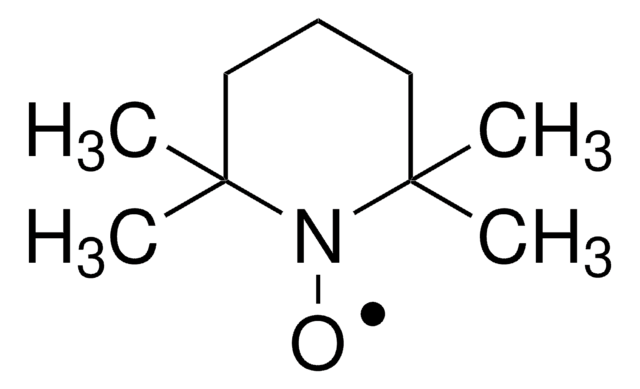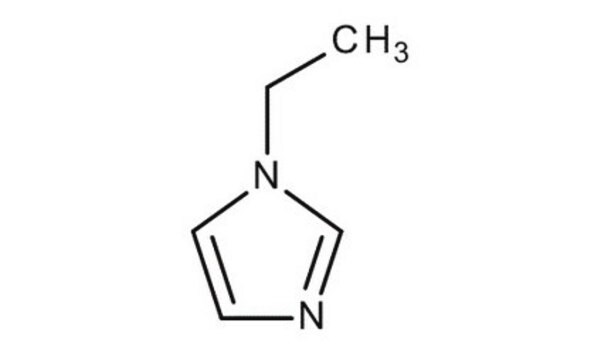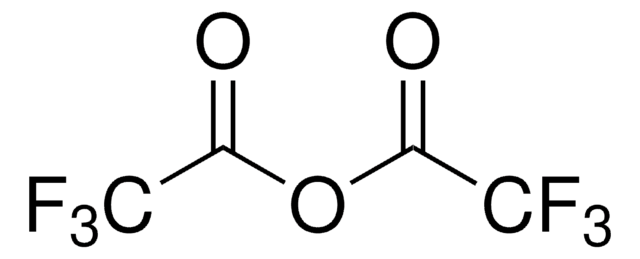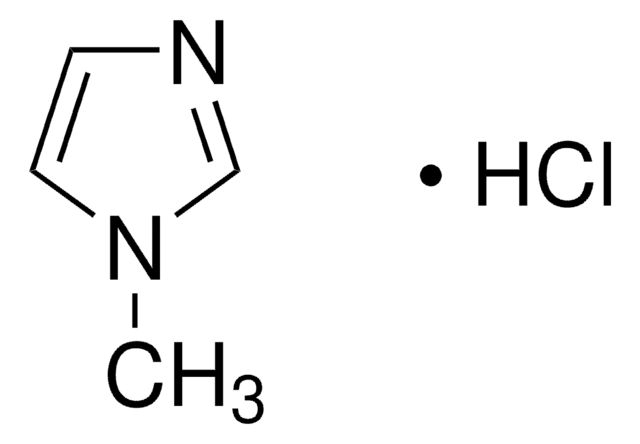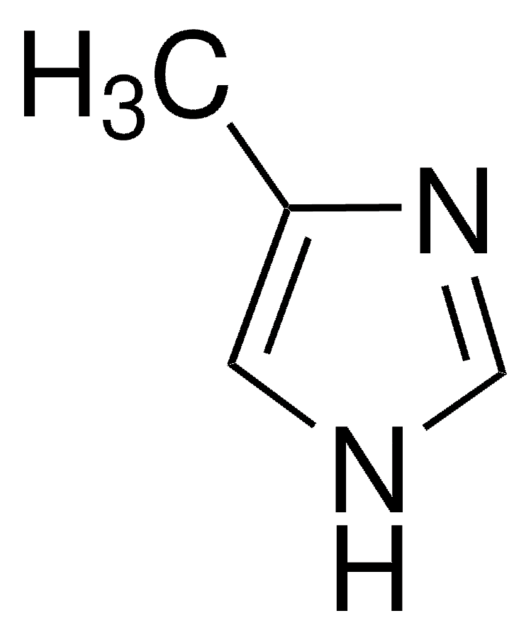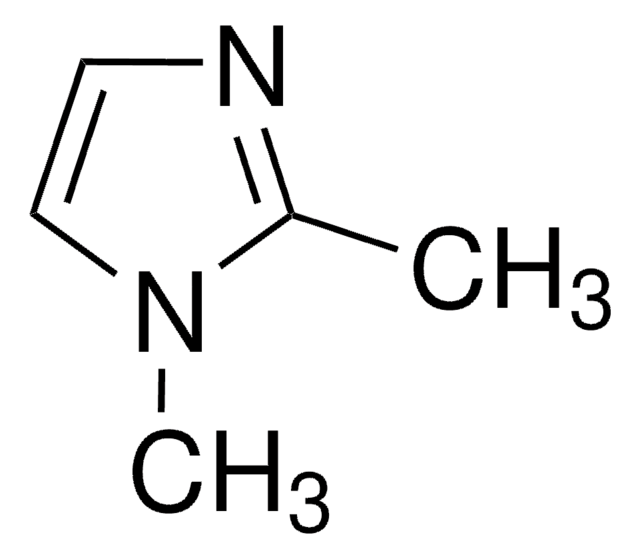8.05852
1-Methylimidazol
for synthesis
Synonym(e):
1-Methylimidazol, N-Methylimidazol
About This Item
Empfohlene Produkte
Dampfdruck
0.4 hPa ( 20 °C)
Qualitätsniveau
Assay
≥99.0% (GC)
Form
liquid
Selbstzündungstemp.
525 °C
Wirksamkeit
1144 mg/kg LD50, oral (Rat)
400-640 mg/kg LD50, skin (Rabbit)
Expl.-Gr.
2.7-15.7 % (v/v)
pH-Wert
9.5-10.5 (20 °C, 50 g/L in H2O)
bp
198 °C/1013 hPa
mp (Schmelzpunkt)
-2 °C
Übergangstemp.
flash point 92 °C
Dichte
1.035 g/cm3 at 20 °C
Lagertemp.
2-30°C
InChI
1S/C4H6N2/c1-6-3-2-5-4-6/h2-4H,1H3
InChIKey
MCTWTZJPVLRJOU-UHFFFAOYSA-N
Anwendung
- Anreicherung nicht korrodierender Elektrolyte: In der Forschungsarbeit wird die Rolle von 1-Methylimidazol bei der Verbesserung der Eigenschaften von nicht korrodierenden Elektrolyten für Batterieanwendungen erörtert. In dieser Studie wird untersucht, wie 1-Methylimidazol als Cosolvens mit einer hohen Donorzahl wirkt und die Freisetzung freier Anionen aus kommerziell erhältlichen Magnesiumsalzen unterstützt. Dies könnte zu Innovationen in der Batterietechnologie führen (Xiao et al., 2024).
- Katalytische Anwendungen in der organischen Synthese: Die Verwendung von 1-Methylimidazol als Ligand in einem luftstabilen Ruthenium(II)-Komplex erleichtert die katalytische Transferhydrierung von Ketonen aus Ethanol. Diese Anwendung demonstriert die katalytische Vielseitigkeit von 1-Methylimidazol in der synthetischen organischen Chemie und stellt ein Verfahren für effizientere und nachhaltigere chemische Reaktionen dar (Beaufils et al., 2024).
- Funktionale Materialien für biomedizinische Anwendungen: Die Forschung an 1-Methylimidazol konzentriert sich auf die Entwicklung von mit Natriumalginat und kationischer Cellulose funktionalisierten Polycaprolacton-Nanofasern. Diese Materialien wurden für spezifische In-vitro- und antibakterielle Anwendungen entwickelt, was den Nutzen von 1-Methylimidazol bei der Herstellung von funktionalen biomedizinischen Materialien zeigt (Tolba et al., 2023).
Hinweis zur Analyse
Dichte (d 20 °C/4 °C): 1,034–1,036
Identität (IR): entspricht
Signalwort
Danger
H-Sätze
Gefahreneinstufungen
Acute Tox. 3 Dermal - Acute Tox. 4 Oral - Skin Corr. 1B
Lagerklassenschlüssel
6.1A - Combustible, acute toxic Cat. 1 and 2 / very toxic hazardous materials
WGK
WGK 2
Flammpunkt (°F)
197.6 °F - closed cup
Flammpunkt (°C)
92 °C - closed cup
Analysenzertifikate (COA)
Suchen Sie nach Analysenzertifikate (COA), indem Sie die Lot-/Chargennummer des Produkts eingeben. Lot- und Chargennummern sind auf dem Produktetikett hinter den Wörtern ‘Lot’ oder ‘Batch’ (Lot oder Charge) zu finden.
Besitzen Sie dieses Produkt bereits?
In der Dokumentenbibliothek finden Sie die Dokumentation zu den Produkten, die Sie kürzlich erworben haben.
Kunden haben sich ebenfalls angesehen
Unser Team von Wissenschaftlern verfügt über Erfahrung in allen Forschungsbereichen einschließlich Life Science, Materialwissenschaften, chemischer Synthese, Chromatographie, Analytik und vielen mehr..
Setzen Sie sich mit dem technischen Dienst in Verbindung.